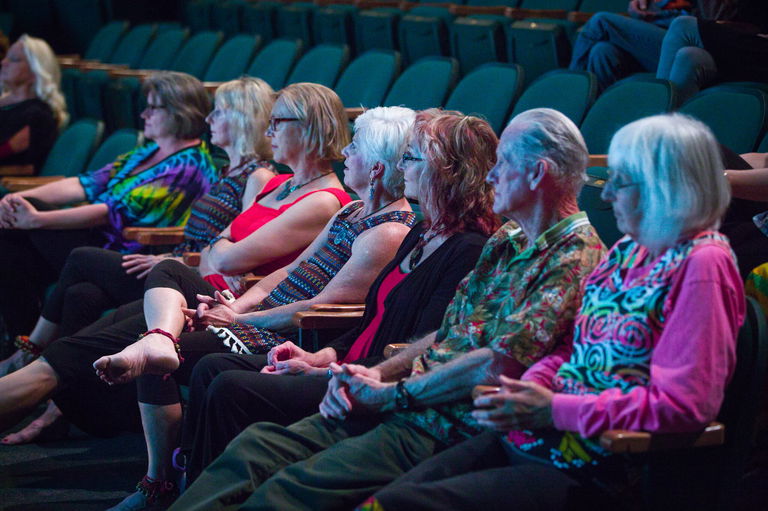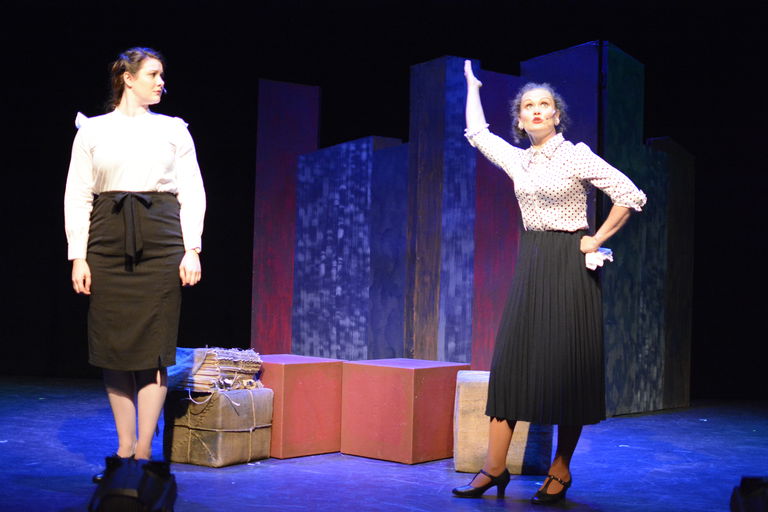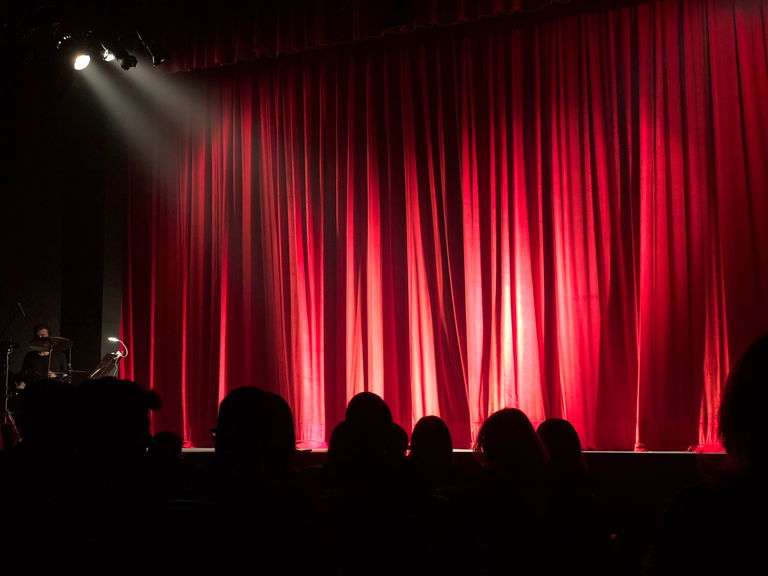
How to Increase Your Audience Size by 300% Overnight
Helen Yung
Jul 21, 2011
published on: 2013/04/29 20:40
Cultural engagement and arts participation, regardless of what form it takes, are the catalysts for Culture Days. In this first part of a chapter originally published in “Pluralism in the Arts in Canada,” Helen Yung navigates the theory and the practice inherent in enabling Canadians to take culture, sometimes literally, into their own hands (to read the second part, follow this link).
Helen Yung, whose specialties include cultural diversity and community engagement, makes installations, interactions and interventions, including storytelling, scenography, technology, and experiences like humour, delight and surprise. You can follow her foibles at www.helenyung.com or on Twitter @helenyung.
If I were junk mail, I would appear in your inbox with variations on the following subject lines:
“How to increase your audience size by 300% overnight!” “Make $100K a year without going to the office!” “Audience diversification! Audience engagement! Results guaranteed!” “HEY! R U THERE?”
I am not junk mail but when I was invited to speak at Magnetic North Theatre Festival several years ago on “Presenting Paradigms in Globalized Canada,” I had considered making a number of such far-fetched-sounding promises at the outset of my (brief) talk. I had been asked to speak on “cultural mediation,” and its connection to a new campaign rippling across Canada, known as Culture Days.
A voluntary campaign to promote public participation in arts and culture, Culture Days was making its debut that September 2010, in over 300 communities across the country. At the time, I was the community engagement manager for Culture Days, half of a team of two hired by a volunteer steering committee, tasked to beg, borrow and inspire a groundswell of self-organized participation in every province and territory.

I remember when CPAMO launched with its first multi-year support from the Trillium Foundation. We were out in Scarborough, in a university auditorium. I was live tweeting the plenary session, or else I would have found a wall and knocked my head repeatedly on it. Over and over again, we heard artists and festival directors affirm that audiences love opportunities to dialogue around the art. Audiences want to participate and be involved. This is how we build audiences.
The affirmation was wonderful, but frustrating: My research at Culture Days had aggregated similar information. Knowing as we do that audiences love and enjoy these outreach, educational, audience development, participatory activities, why do we still so often insist on maintaining them as peripheral, ancillary add-ons to our main cultural programs? (To be clear, my frustration was with myself, and rampant conformity within the system, not with the speakers or CPAMO.)
People make and read content on cellphones, drift on the Internet, shop online and in brick-and-mortar stores, garden, cook and dine out like gourmands, blog, make videos and trouble to photo-document all these forms of self-expression. This is culture. This is how the general population expresses its values, fears, hopes and dreams daily. The whole world, indeed even we arts workers all participate in a vibrant popular culture that seems often unconnected with our Arts and Culture.
A joint initiative between civic leaders, cultural institutions, arts councils, and government, Culture Days was established as an annual national campaign to revitalize relations between the daily lives of Canadians and the arts and cultural scene in our communities.
The Culture Days vision places the typically peripheral outreach, educational, audience development, and participatory arts programs at centre, declaring these interactions the focus and delight of the event. These types of interaction, which include workshops, live demonstrations, artist talks, lectures, classes, guided tours, open rehearsals, Q&As, hands-on experiences, and collaborative art projects, are what francophone Canadians call “la mediation culturelle” or “cultural mediation.”
As a fairly new term and concept that has made its way over from France, cultural mediation is unfamiliar to most anglophone Canadians. In essence, cultural mediation is a newly-defined (but already often-practiced) field of work devoted to mediating (negotiating, facilitating, creatively supporting) the relationship that the public has with Culture. Much more literature in English can be found on cultural democratization and cultural democracy – two areas of work which cultural mediation gathers under its expansive tent.
Historically, the field of cultural mediation was primarily about cultural democratization - creating access to cultural products or artifacts. Museums and galleries offering free admission to the public is an example of a cultural democratization initiative. Free admission means more people are able to access the cultural artifacts housed inside these cultural institutions.
Access, however, is defined in the broadest of terms; cultural democratization initiatives need not be limited to reducing economic barriers. Artist talks or mini lectures, for example, are other examples of cultural democratization projects that help demystify the art and reduce perceived knowledge barriers.
Over time, the term cultural mediation broadened to include efforts aimed at fostering cultural democracy. At bottom, cultural democracy is about who gets to create or produce Culture. Community arts and participatory arts are projects that foster cultural democracy, wherein citizens are encouraged to participate in and express themselves.
In sum, cultural mediation refers to a great range of practices, which are more frequently known in anglophone Canada as outreach, audience development, participatory arts and community arts.
Putting these cultural mediation activities front and centre, the Culture Days vision is spectacular and transformative: Imagine three days when people across the country will find arts and cultural activities available to them everywhere – for free, just around the corner. If you don’t go find it, they will come find you – in the streets or perhaps even at your place of work.

Not only are these activities artistic and cultural, but they are interactive and participatory. As an audience-participant, you are promised a friendly, welcoming environment where you will not be bored but engaged. Literally. You will be invited to sing, dance, play, read, act, experiment, explore, design, consider, question, and share.
The question remains, however, if cultural mediation is, in fact, another name for outreach, audience development, participatory arts and community arts – things that we already do – what difference does Culture Days make? Why should we care about Culture Days? What can it mean for us?
First, as I’ve said before, Culture Days takes those outreach, audience development, community engagement, and participatory projects that are typically peripheral add-ons for most organizations, and makes it the focal point of this coast-to-coast-to-coast event. The whole weekend program for Culture Days consists of only cultural mediation activities.
What this means for individual artists and cultural workers is that the Culture Days weekend is about real-life interactions with the public. Meeting with the public in small, intimate gatherings to share your studio, your artistic processes, show people what you do and where you do it, and to invite them to speak their minds, enter into an exchange with you – these 1-to-1 interactions create value through communication.
Culture Days is not about another grant, another project, another thing that generates paperwork or requires meetings. Get back to basics.
During Culture Days, take your art to the park, to the streets, to the mall, or into public transit, and dare to have a conversation with a stranger about it.
While the Culture Days vision is described in the media, for brevity’s sake, as a massive arts and culture party, the reality is that the most meaningful, transformative part of Culture Days will happen in thousands, eventually millions of small magical moments on the ground. The heart of Culture Days lies in the 1-to-1 interactions between artists and the public.
When I think of Culture Days, I see light bulbs above people’s heads. Thousands of light bulbs lighting up in thought bubbles floating over the people engaged in these 1-to-1 interactions. These light bulbs represent many connections: “oh, I like this,” or “oh, I miss this,” or “oh here it is!” or “oh what about this?” …and as well, “oh i never thought…” or “oh wait ’til I tell ___ about this,” or just plain old – “oh wow.”
Rather than let the event slide by, as artists and culture-makers, take the weekend to do something unexpected. Even if you already do cultural mediation (outreach, audience development, arts education, community arts, or participatory projects) think of what you haven’t done and do that.
Consider this: If you really did want new audiences, you would have them by now. Suppose that this were true. You know where they are. You know where they live, work, and play. Why haven’t they seen your work yet? In other words:
- Who is this new audience? (Identify them very specifically: where do they live, what do they do, how do they survive, what interests them. List everything you know about them.)
- Why do you want them? (Be honest.)
- What is it about the way you work that prevents you from interacting with this group? (Be brave.)
The greatest barrier to successfully attracting the new audiences that we (claim to) want, I think, is ignorance. We don’t know the people that we (claim to) want to bring in. Often we don’t know who, specifically, we’re talking to, in terms of new audiences, and therefore we don’t know who didn’t show up or why. This is where my (not really) infamous mall idea comes in.
Research published by the International Council of Shopping Centers estimate that 92% of Canadians over the age of 12 have visited a shopping mall in the past 30 days.
That’s a staggering number: 92% of Canadians. OK, in truth, that’s dated data from the early 2000s, before online shopping became more prevalent but I still think I am on to something here. There are far more Canadians of diverse socio-economic-cultural backgrounds going to the mall than going to the theatre. (Or the gallery, museum, etc.)
And so, here is my soap-box rally: Let’s go to the mall. Whether it’s for Culture Days or on any other day, let’s go to the mall.
If Art needs audiences and we believe in Art for all, then Art stands to benefit from more artists and arts workers making more trips to the shopping mall.
The easiest way to learn about new potential audiences (AKA people you don’t know) is to simply go where they are. You don’t need a consultant. You don’t need a grant. You don’t need permission. Just go where they are, and be the SOHBs (Sensitive Observers of Human Behaviour) that you have trained to be. This is not a metaphor or a thought experiment. This is a prescription, a mission, a manifesto, a self-help exercise, a set of suggestions I earnestly urge you to follow.
Take a page from the social media playbook: Don’t expect people to come to you. (Known as the “build it and they will come” mentality. Hubris.) Go to where they already congregate. Join the conversation. Be authentic. This means, among other things:
Listen, listen, listen. Listen before you participate. And when you do participate, start small, listen some more, adjust your participation, and keep listening. Be a good guest. Don’t walk into someone else’s party, get on a chair, and invite everyone to leave this party to come to yours. Be a good guest. Enjoy, appreciate, contribute, follow up afterwards with thanks. Make friends. You might not like everyone, but if you don’t like anyone, why would you want any of them to come to your party anyway? Why should they be interested in you? What makes you think they should come where you are, show up to appreciate what you do, what you’re about, if you can’t, if you won’t, show up to where they are, and learn to appreciate them on their terms, on their turf? Going to the mall is about going back to the original social medium – good old-fashioned talking to people in real life. Have conversations with strangers. Observe people’s behaviours and interactions. Take notes. Glean insights. In anthropology and marketing, this is called ethnography.
It must be stressed – you really need to talk to people. Don’t just talk to them in your head; go have a conversation with mall-goers for real. If that’s not enough, pick a spot and try improvising a bit of theatre. Intervene on the lives of strangers with your art. Use your tools as an artist to have a meaningful exchange with the strangers around you. Go home. Go back to the mall the next day, the next week, every week. Listen, watch, chat, and try some more.
Keep listening and keep watching. Do this, and share with one another the results of what happened, what you noticed, how you reacted, and how the mall-goers reacted to you. In other words, do something akin to what Peter Brooks did, famously, in the 1970s: Take your art into the Sahara desert, into Africa, into unknown lands, into the suburbs (where most malls are located) to people who have never heard of you, to people who are used to living without you and whatever it is that you’re selling. Cross the waters, stay and be persistent with your efforts. Watch your art, your training, your ego, your ideals, your assumptions, your paradigm fall apart. Be thrilled.
Create your art (and presentation practices) anew in this blinding context of (in)difference.
… . .
It’s been two years since I first presented this idea at Magnetic North and declared the suburbs the terrain of the new avant-garde. In all honesty, I still have not followed my own shopping mall prescription. And my reasons might not be so different from yours…
- I don’t like the mall. The air is bad.
- Fluorescent mall lighting gives me a headache. Plus it’s bad for my skin.
- I don’t need to buy more stuff.
- The mall is far away and public transit takes effort.
- The mall is boring. People are boring. And lonely. If we start chatting, I will have to listen and they might not stop talking. Their stories might make me feel bad. Or I might yawn. That would be rude.
- It’ll be embarrassing.
- Nobody cares.
- I will be uncomfortable.
- I will make other people feel uncomfortable.
- What will I say? What will I do? How will they react?
It’s a jumbled, confused list. And as I go on listing reasons for not doing the very thing I’ve advised you to do, the truth becomes ever more clear: These objections are precisely the reasons to do it.
At bottom, these objections more or less relate back to one objection: I foresee discomfort. I am scared and feel anxious. The freedom is troubling. It may be very awkward. What if I suck?
To which, I can only berate myself in words borrowed from another writer: “Are you a woman, or a mouse?”
Laziness, cowardice, and conformity are the three flipsides of courage.
Are you a theatre radical, a pioneer, a bold, gutsy artist, or did you train yourself all these years to peter out when it is, in fact, your time? Am I here to make art for my friends only, or do I make art that is vital, that must be witnessed by thousands of people?
The thing is, going to the mall isn’t just about getting new audiences. If the prospect scares you and me, it’s because deep down we both know it will change our practice. Surely for the better?
The shock, the vulnerability – it will make my work (and how I work) more interesting, leaner, bolder, and more street-savvy, which is to say, more popular.
Or, at the very least, I will make new friends. And you can usually guilt friends into coming to see your work.
I am determined to take my own advice. This year, I am going to the mall more often.
Creative Commons License This work is licensed under a Creative Commons Attribution-NonCommercial-NoDerivs 3.0 Unported License





